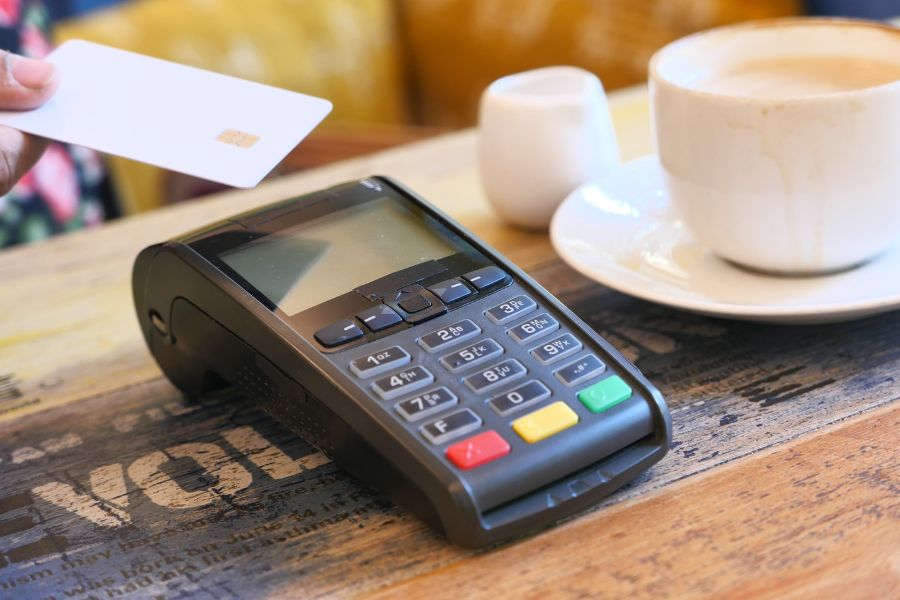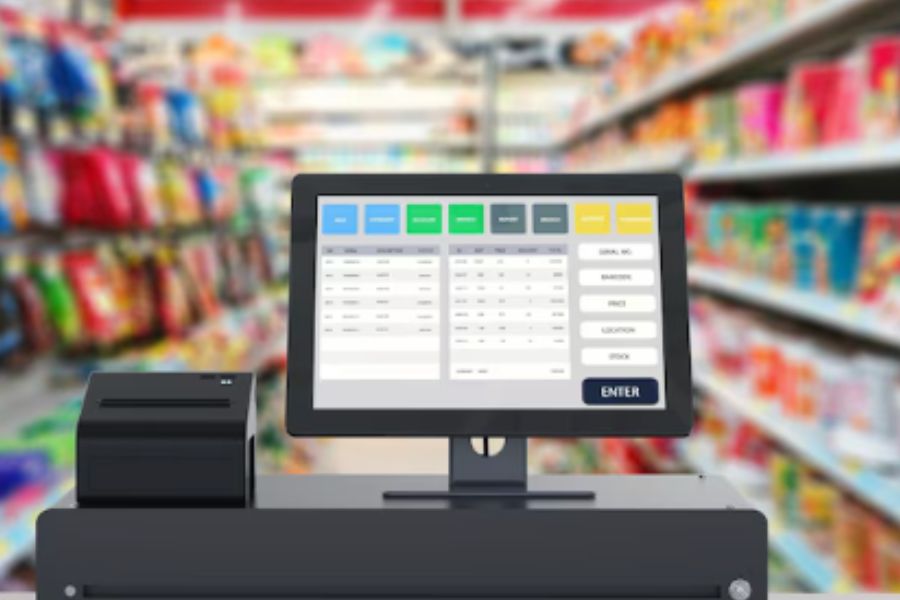As 2025 begins, ecommerce strategists and marketers are preparing for a year defined by rapid innovation and shifting customer expectations. With advancements in artificial intelligence, the rise of social commerce, and evolving approaches to data protection, the ecommerce POS landscape is undergoing significant change. Businesses that want to stay competitive must adapt to these trends, leveraging technology to improve customer relationships, streamline operations, and drive growth. This article explores the key ecommerce POS system trends that will shape retail in 2025 and highlights what businesses need to know to succeed in this dynamic environment.
Highlights:
- Social commerce, contactless payments, AI-driven personalization, and advanced security measures are transforming how retailers engage with customers and manage operations in 2025.
- Modern POS systems help businesses unify sales, improve payments, and leverage customer insights to stay competitive.
Key Ecommerce POS System Trends Transforming Retail in 2025
Social Commerce
Social commerce is rapidly transforming retail, turning platforms like Instagram, TikTok, and Facebook into full-scale ecommerce hubs. By 2025, these platforms will not only serve as places for connection but will be central to the shopping experience, allowing users to make purchases directly within the app. This evolution challenges businesses to adapt their ecommerce POS systems to handle transactions seamlessly across social platforms.
To keep pace, ecommerce POS systems must accommodate payments across multiple touchpoints, including social media, mobile apps, and websites. Emerging technologies like AI are also playing a bigger role, enabling personalized product recommendations and helping businesses target their customers with precision. For example, AI-driven POS systems can analyze browsing history and purchase behavior to suggest relevant products at the right time, increasing conversion rates.
As social commerce drives higher spending per customer, businesses are focusing on boosting sales from their existing audience. This requires POS systems capable of providing actionable insights into customer behavior, loyalty patterns, and engagement metrics. In 2025, the partnership between social commerce and POS systems will redefine the shopping experience, blending convenience, personalization, and innovation.
Growth and Adoption of Contactless Payments Technologies
The rise of contactless payment technologies, driven by advancements like NFC technology, is transforming ecommerce POS system by making transactions quicker and more secure.
The global contactless payments market, valued at US$ 22.4 billion in 2022, is expected to grow to US$ 90.6 billion by 2032, with an estimated CAGR of 15.4% between 2023 and 2032. This growth is fueled by the adoption of mobile and wearable technology, along with the integration of biometric security features.

Retailers increasingly incorporate contactless payments to enhance customer satisfaction and streamline checkout processes. The percentage of retailers offering at least one contactless payment jumped from 40% in 2019 to 67% in 2021, reflecting a steady shift toward faster, touch-free options.
Consumers are driving this demand, with over 80% now using contactless payment methods such as NFC-enabled cards and mobile wallets. This trend pushes ecommerce POS systems to support a broader range of payment options, ensuring transactions are faster and more secure. These systems also integrate advanced fraud prevention measures, such as tokenization and encryption, to safeguard customer data in a payment landscape where speed and trust are equally critical.
Loyalty Programs for Enhanced Customer Engagement
By 2025, loyalty programs integrated with ecommerce POS systems will become a cornerstone of customer retention strategies. These programs go beyond simple discounts, utilizing purchase data to create tailored promotions and personalized rewards that resonate with individual customers.
Advanced POS systems now update loyalty data in real-time across all sales channels, ensuring customers receive instant rewards and a consistent experience whether shopping online or in-store. For example, a POS connected to CRM tools enables businesses to analyze customer preferences and behaviors, making it easier to design campaigns that drive repeat purchases.
This seamless integration between loyalty programs and POS systems not only improves operational efficiency but also strengthens customer relationships. In 2025, businesses embracing these systems will see greater engagement, higher retention rates, and long-term revenue growth.
AI-Driven Personalization
AI is transforming the retail industry, particularly in the way POS systems operate. AI-powered systems can analyze customer data, such as purchase history, preferences, and even real-time browsing patterns, to suggest products or offer personalized discounts.
For retailers, AI-driven POS solutions simplify decision-making and operational management. Predictive analytics allow businesses to adjust pricing dynamically based on market trends or customer demand, while automation handles time-intensive tasks like inventory tracking and transaction processing. This improves accuracy, reduces errors, and frees employees to focus on customer service.
In 2025, AI will also contribute to unified sales channels by managing transactions across online stores, mobile apps, and physical locations. Customers will benefit from a seamless and intuitive shopping journey, while businesses gain actionable insights that help them stay competitive in a fast-changing market.
Data Protection and Fraud Prevention
In 2025, data protection and fraud prevention will remain at the forefront of POS system advancements. AI-driven spear phishing campaigns and social commerce fraud are becoming more sophisticated, targeting both businesses and customers.
For example, fake ad campaigns on platforms like Instagram and TikTok exploit the growing comfort consumers have with shopping online, leading to a rise in fraud cases. In 2023 alone, U.S. consumers lost over $1 billion to brand impersonation scams, a trend that is expected to escalate as social commerce expands.
To combat these threats, modern POS systems are integrating robust security features, such as end-to-end encryption, tokenization, and compliance with PCI DSS standards. Businesses must also proactively monitor digital touchpoints, including their online stores and social media channels, to detect and mitigate fraudulent activity.
What Happens When You Don’t Upgrade Your POS System?
Failing to upgrade your POS system creates roadblocks that can significantly impact your business. Outdated systems often lack support for modern payment methods, such as mobile wallets and contactless payments, which are now critical for meeting customer expectations. This limitation can frustrate shoppers and even lead to lost sales.
Security risks are another major concern. Older POS systems are more vulnerable to cyber threats, as they typically lack the advanced encryption and fraud detection features to combat evolving attacks. This puts sensitive customer data at risk, potentially leading to breaches that damage your brand’s reputation.
Integration is another pain point. An outdated POS may not work seamlessly with essential tools such as CRM platforms or inventory management systems, creating inefficiencies that slow down operations. For example, mismatched inventory data could result in overselling or stockouts, while disjointed customer data prevents personalized service.
Perhaps most critically, sticking with old technology leaves you lagging behind competitors who have embraced advanced POS systems. These businesses leverage AI-driven analytics, omnichannel integrations, and real-time data to enhance customer experiences and streamline operations. Without an upgrade, your business risks falling out of step with industry standards, and losing your competitive edge in the process.
Transforming the Future of Your Ecommerce POS System with ConnectPOS
Transforming your ecommerce POS system with ConnectPOS’s ecommerce POS means utilizing its advanced features to simplify operations, improve customer experience, and integrate smoothly with your online store.
Key benefits include:
- Ecommerce Platform Integrations: Seamlessly connects with Shopify, Magento, WooCommerce, BigCommerce, and more, enabling unified management across online and offline channels.
- Centralized Operations: Combines sales, inventory, and payment data into a single platform, simplifying workflows and improving efficiency.
- Multi-Currency Support: Facilitates global expansion by processing payments in various currencies without extra fees.
- Customizable Features: Tailor workflows, product setups, and checkout options to meet your business’s specific needs.
- Customer Insights: Centralized customer data helps refine marketing strategies and create personalized shopping experiences.
- Comprehensive Integration: Connects with CRMs, payment systems, and ERPs, ensuring a smooth and cohesive operation across all channels.
FAQs: Ecommerce POS System
- What is social commerce, and how does it affect the ecommerce POS system?
Social commerce merges shopping with social media, allowing customers to purchase directly through platforms like Instagram and TikTok. POS systems will need to integrate with these platforms for a smooth purchase process and real-time transaction management.
- Why are contactless payments becoming important in retail?
Contactless payments provide faster and more secure transactions, improving customer satisfaction. POS systems are adapting to support NFC payments, mobile wallets, and wearable technology, making them a key part of the payment landscape in 2025.
- How do POS systems support multi-channel retailing?
Modern POS systems sync both online and offline sales, inventory, and customer data in real time. This ensures consistency across all channels, from physical stores to ecommerce websites, providing a unified customer experience.
- What are the benefits of integrating POS with CRM and other business tools?
Integrating POS with CRM and other business tools allows businesses to gain deeper insights into customer behavior, preferences, and purchase patterns, enabling more effective marketing and sales strategies.
- How does ConnectPOS cater to the needs of different ecommerce platforms?
ConnectPOS offers integration with leading platforms like Shopify, BigCommerce, Magento, and WooCommerce. It supports multi-currency, payment processing, and inventory management across various sales channels, making it adaptable to a wide range of business needs.
Conclusion
Ecommerce POS systems are evolving rapidly in 2025, driven by trends like social commerce, contactless payments, and AI-powered personalization. These shifts are creating opportunities for businesses to streamline operations, improve customer experiences, and stay ahead in an increasingly competitive market.
If you’re looking to align your business with these trends, ConnectPOS provides the tools to simplify multi-channel sales, enhance customer engagement, and secure your operations. Contact ConnectPOS today and prepare your business for the future of retail.



